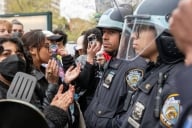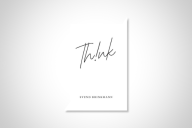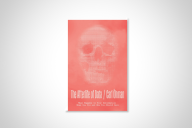You have /5 articles left.
Sign up for a free account or log in.
Originally published in France in 1989 and now arriving in English translation from Yale University Press, Arlette Farge’s The Allure of the Archives is a little gem of a book. A diamond, perhaps, given both its clarity and the finesse with which it’s been cut and set. It is an unmistakable classic: one of the great memoirs of the silent, day-to-day drama of research.
Yet it is not the story of a career. A reader unfamiliar with her name will soon enough recognize that Farge specializes in 18th century social history. (She is director of research in modern history at the Centre Nationale de la Recherche Scientifique, in Paris.) One of her endnotes refers to the volume she published in collaboration with Michel Foucault in 1982, two years before the philosopher’s death. It was an edition of selected lettres de cachet from the files of the Bastille. (In A Tale of Two Cities, Dickens portrays the notorious legal instrument as one of the aristocracy’s corrupting privileges, but Farge and Foucault showed that it was disturbingly easy for an ordinary person to take one out against a family member.)
Many an over-active ego has turned to autobiography on far slimmer grounds than that. But in spite of its personal and even intimate tone, The Allure of the Archives is never primarily about the author herself. She instead writes about a subjectivity that exists only upon entering the reading room – or perhaps while trying to find it during the first visit.
As much as an institution, the archive is, for Farge, the site of a distinct array of experiences. It is defined by rules, habits, worries (especially with fragile documents), and a kind of ambient awkwardness that she evokes perfectly. “The silence of the archives,” she writes, “is created out of looks that linger but do not see, or gazes that stare blindly. No one escapes these wandering eyes, not even the most obstinate reader, his face clouded by work.”
In the midst of that tense, watchful silence, the patrons jockey for prime desk space, or drive each other to distraction with coughs and nervous tics. Locating the documents you want requires initiation into the cabala of archival reference numbers. Even if you have one, it “often will only direct the reader to another serial number that will itself only give access to a new series where other serial numbers await.” For guidance, one must turn to the superintendent of the reading room: “She reigns, gives advice that bears a strong resemblance to orders, speaks very loudly, and does not understand what she does not wish to understand, all the while constantly ruffling the pages of her morning newspaper.”
Her descriptions are very true to life, even an ocean away from the French archives she has in mind. The part about reference numbers may sound like comic exaggeration. It isn’t, or at least it corresponds to my last visit to the Library of Congress manuscript collection some years ago.
But all of it is just the setting for the necromancy of research – calling up men and women who are long dead and utterly forgotten, speaking for the first time in two or three hundred years. The dossiers Farge explored in her research consisted of police and judicial records as well as reports to His Majesty on what the rabble of Paris were doing and saying from week to week. A whole layer of informers – called in slang mouches, “flies” – kept track of rumors and complaints making the rounds. (They were, in effect, flies on the wall.) Also in the files are slanderous and subversive posters with traces of grit clinging to the back after the authorities ripped them down.
Police interrogations (transcribed for use during an investigation, then filed away and eventually warehoused) document the everyday happenings, criminal and otherwise, of urban life. Most of those speaking left no other account of their lives. Nor could they; even those who could read a little had not always learned to write. Having become accustomed to reading the faded or erratically punctuated documents, the researcher may undergo a sort of rapture: “the sheer pleasure of being astonished by the beauty of the texts and the overabundance of life brimming in so many ordinary lives.”
At that point, a danger becomes evident: “You can begin to forget that writing history is actually a kind of intellectual exercise, one for which fascinated recollection is just not enough…. Whatever the project is, work in the archives requires a triage, separation of documents. The question is what to take and what to leave.” And the researchers answers it by coming to recognize the patterns that emerge from one document to the next: the unstated assumptions made by those on either side of the interrogation, the changes in tone or preoccupation recorded over time.
The historian learns to frame questions that the archive knows how to answer – while remaining open to the secrets and surprises to be found in the boxes of paper that haven’t been delivered to her desk yet.
“In the archives,” Farge writes, “whispers ripple across the surface of silence, eyes glaze over, and history is decided. Knowledge and uncertainty are ordered through an exacting ritual in which the color of the note cards, the strictness of the archivists, and the smell of the manuscripts are trail markers in this world where you are always a beginner.” Farge's memoir is adamantine: sharp, brilliant, perfect, and created to last.








